Sonos Arc
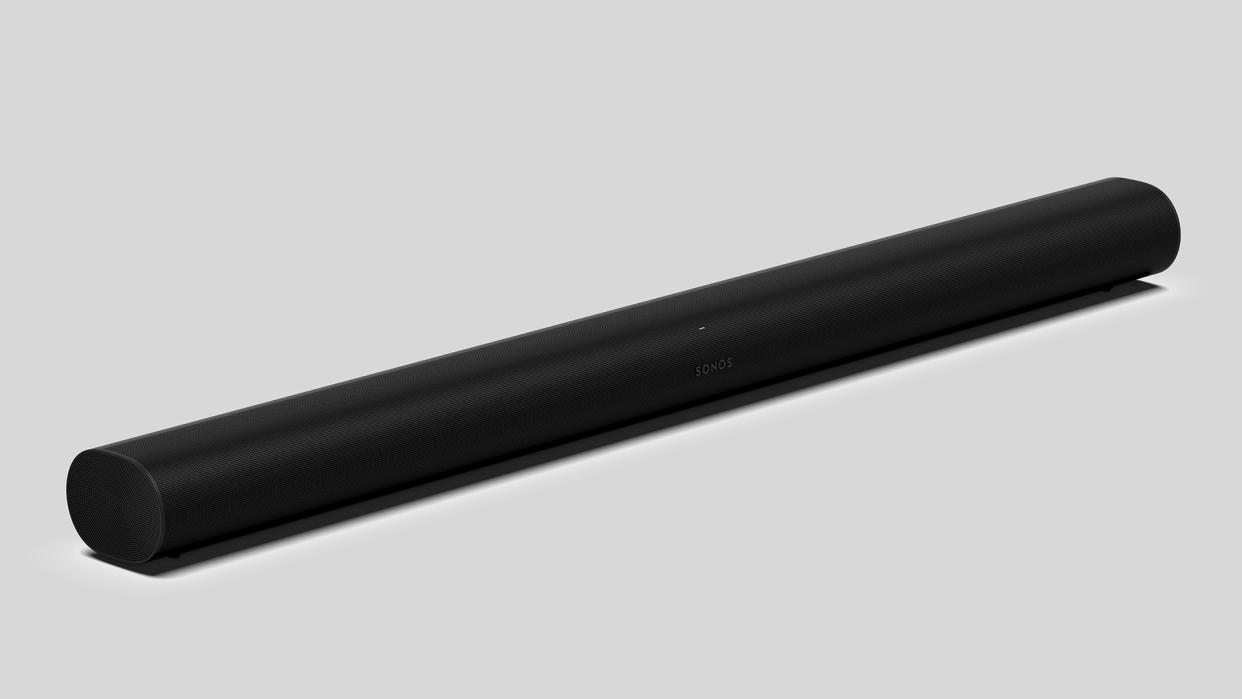
We could only imagine the pressure Sonos felt when it announced the Sonos Arc to the world; a follow-up to its beloved Playbar soundbar and its first new soundbar since it launched the revolutionary Beam Gen 1. However, three years on, we're still yet to see a soundbar that compares to it for the money.
In fact, we're yet to see a soundbar that compares to the Arc at all, as it's become our go-to recommendation for those looking for effective Dolby Atmos sound, as well as a comparison device in many of our soundbar reviews. Since its launch it's only gotten better, with backup from Sonos' wider selection of smart speakers and subwoofers, meaning you can build a modular system with the Arc at the core.
But we're not here to talk about those other speakers, we want to know how the Arc sounds, and if we've not already made it clear, it's a bit of a game changer.
Price
The Sonos Arc launched at a price of £799 / $799 /AU$1399 but, along with many of Sonos' other products, underwent a price increase in 2021 and now nominally retails for £899 / $899 / AU$1499. That said, discounts are fairly common – we've seen it dip below £700 / $750 / AU$1400.
The Arc replaced the Playbar and Playbase, both priced at £699 / $699 / AU$999, and originally sat above the discontinued Gen 1 Beam (£399 / $399 / AU$599). It now tops Sonos' expanded soundbar family with the virtual Dolby Atmos Beam Gen 2 priced at £449 / $450 / AU$699 and the non-Atmos Sonos Ray costing £279 / $279 / AU$399.
Rivals are plentiful, with many brands having taken aim at the Arc over the years, though none has managed to topple it. The closest rivals we've seen thus far would be Sennheiser's Ambeo Plus soundbar and Sony's HT-A7000 which did manage to snag Product of the Year. While the Sennheiser is in a totally different league when it comes to price, the Sony has dropped in price, edging ever closer to the Arc, now at £999 / $1400 / AU$1599
Build
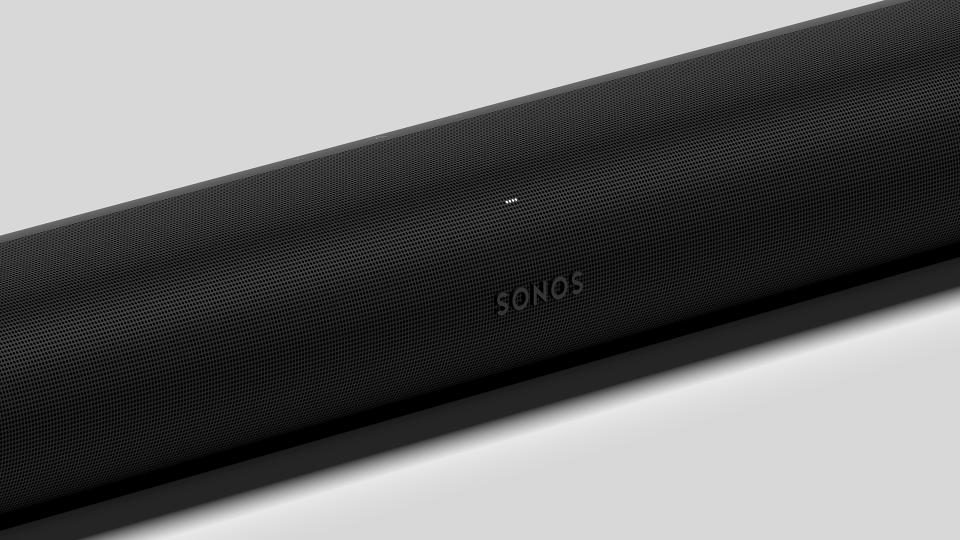
The Sonos Arc is specifically designed to partner bigger TVs than the more compact Beam Gen 2. At 114cm (45"), it is a bit wider than a typical modern 49-inch TV and is proportionally best partnered with a 55-inch TV.
Sonos Arc tech specs

Connections HDMI, optical, ethernet
ARC/eARC eARC
Surround format support Dolby Atmos, Dolby True HD, Dolby Digital+, Dolby Digital, DTS
Bluetooth No
AirPlay 2 Yes
Voice control Amazon Alexa, Google Assistant
Dimensions (hwd) 8.7 x 114 x 12cm / 3.4 x 45 x 4.5 inches
Weight 6.3 kg / 13.8 lbs
If you don't have a sideboard big enough to accommodate its sizeable width, the Arc can be wall-mounted, with onboard Trueplay tuning software automatically adjusting the speaker's frequency response accordingly. The bespoke Sonos wall mount is a £69 / $79 / AU$99 optional extra but there are also now plenty of third-party Arc wall mounts available for less.
Once in position, most of what you can see of the Arc is a 273-degree grille that hides the array of front-mounted and up-firing speakers. Each end also features a grille-covered driver.
The curvy design helps mask the Arc’s dimensions and makes it look svelte, but its height measurement of 8.5cm is not inconsiderable. That's unlikely to be so high as to encroach on your TV's picture, but it could conceivably block the signals being sent to it by your remote control. At least it could were it not for the integrated IR repeater, which is enabled by default and works flawlessly during testing.
The Arc's own status light consists of LEDs that shine through four holes above the subtle Sonos logo (fun fact: there are 76,000 holes in all the grilles combined). By default, these LEDs remain off most of the time and their brightness is tailored to the ambient light in the room even when they are lit (when adjusting volume, for example), so as not to appear too bright.
The touch-sensitive play/pause 'button' is integrated into the frame and flanked by two context-sensitive touch panels that you can use to control volume, if you use them at all. To the right are the microphone button and a single LED that indicates whether the Arc is listening for Alexa or Google Assistant voice commands.
Features
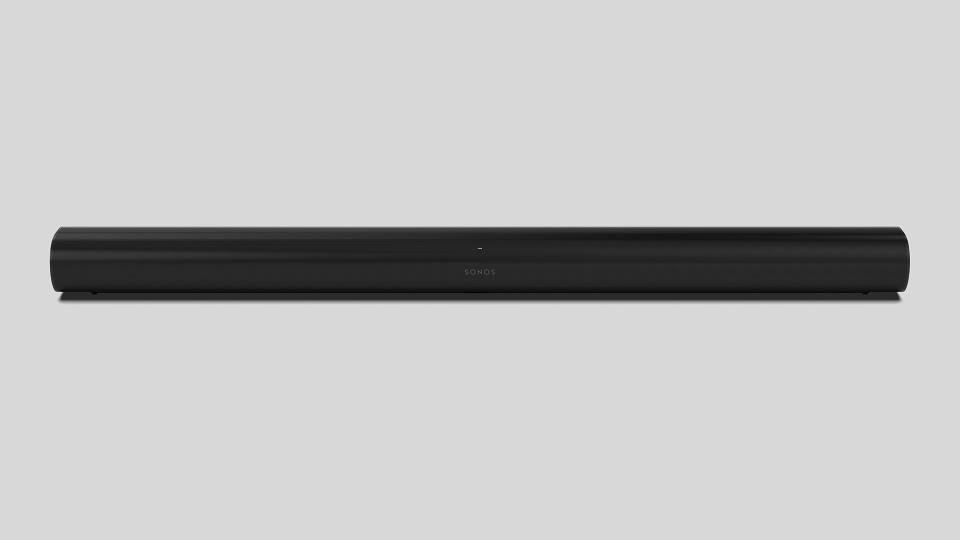
At the back of the Arc are the power socket, an ethernet connection for wired networking, and a single HDMI port. An optical adapter is included for those with older TVs, but the intention is that you use HDMI and the ARC (Audio Return Channel) functionality to get the sound from your TV to the Arc.
In fact, unlike the original Beam and the Ray, the Arc supports eARC (Enhanced Audio Return Channel), so it can handle higher-quality Dolby Atmos signals from TVs that can output them. Sonos notes that there are now over 25 streaming apps that carry content in Dolby Atmos (Netflix, Amazon Prime Video, Disney+ and Apple TV, to name just four), so it's becoming increasingly widespread.
It’s important to note that eARC isn’t essential for Dolby Atmos transmission. Atmos can be carried using either the Dolby Digital+ format or the higher-quality Dolby True HD. A standard ARC connection can handle the former but not the latter. Currently, all streaming services use Dolby Digital+ for their Atmos soundtracks anyway, so eARC holds no advantage here, but it does enable higher bit rate Atmos sound to be passed from an external source, such as a 4K Blu-ray player or Xbox, through the TV and on to the Arc.
Of course, your TV’s specs are important here. To get True HD Dolby Atmos, your TV needs to not only support eARC but also have pass-through functionality. And just because your TV has eARC or ARC doesn’t mean every one of its streaming apps that should carry Atmos actually will.
We've now tested the Arc with many of the best TVs, and it's clear that mileage varies based on brand and age. The Now Playing screen in the Sonos app flags up that Dolby Atmos is being received, while the About My System part of the settings menus confirms the format in which it’s being transmitted. With a bit of fiddling in the TV menus, all of the LG OLED and Samsung QLED TVs that we've used have been able to transmit Dolby Atmos to the Arc from their integrated apps and pass through True HD Atmos from our Oppo UDP-203 Blu-ray player without issue.
However, the older Samsung Q7F that we still have knocking around, which doesn’t have eARC but does have ARC, doesn't support Atmos, either from its apps or an external source. In short, the newer your TV, the better its Atmos support is likely to be. Of course, this wouldn’t be an issue if the Arc had more HDMI inputs that allowed it to take audio directly from an external source and not rely on your TV as a go-between, but the downside to that would be a much less simple, less neat set-up.
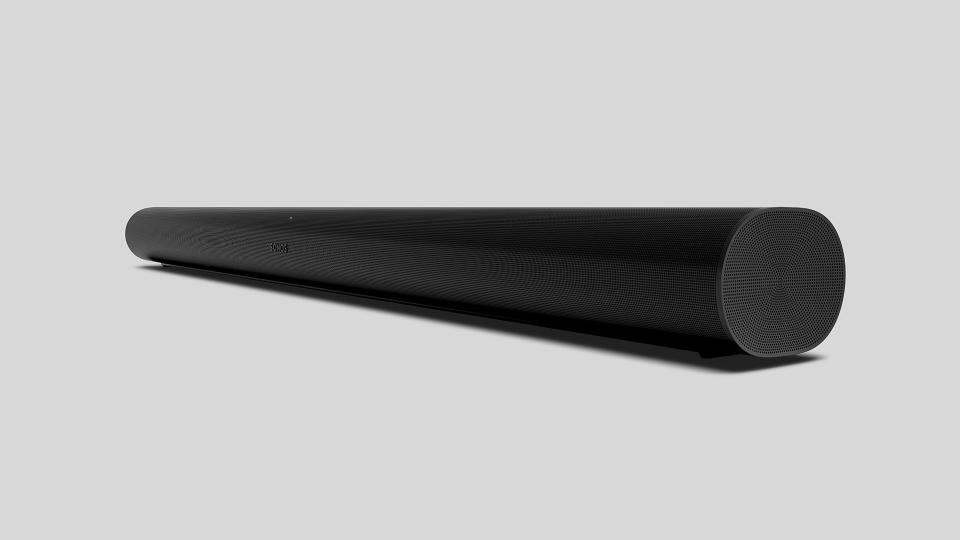
The Arc's Dolby Atmos sound field is generated by 11 Class D digital amplifiers that power 11 custom drivers. Eight of those drivers are elliptical woofers evolved from those in the Beam (four along the front, two on top and one in each end), while the other three are silk-domed tweeters that are all built into the front but with two firing diagonally into the room.
Sonos refers to the Arc's arrangement as 5.0.2, which clearly doesn't add up to 11 but makes more sense if you think of it as using its 11 drivers to attempt to replicate the soundfield of a five-channel surround sound system with no subwoofer and two height speakers. That '0' can be turned into a '1' through the addition of a Sub Gen 3 priced at £699 / $699 / AU$999 or new Sub Mini (£429 / $429 / AU$699). Other Sonos speakers can be used as dedicated surrounds, such as two Sonos One and One SL rear speakers costing £358 / $358 / AU$538 or the Symfonisk bookshelf speakers priced at £99 / $99 (around AU$176) from Sonos' IKEA collaboration. There are also now new Era speakers, the more expensive of which, the Era 300 (£449 / $449 / AU$749), has up-firing speakers so can complete the Arc's Dolby Atmos presentation in a way that previously wasn't possible. The cheaper Era 100 will still provide top-notch surround sound, but it doesn't include dedicated upward-firing drivers for Dolby Atmos like the 300.
The Arc uses its array of speakers to bounce sound off your walls and ceiling to create a 3D audio effect, and the soundfield is once again tailored to your room using Sonos' Trueplay technology. Despite the extra audio plane, the process is identical to that of other Sonos speakers: the soundbar outputs a series of test sounds that are measured by your iOS device (Android devices still aren't supported), first from the listening position and then from around the room.
Bass and treble can also be adjusted in the Sonos app, although you're unlikely to feel the need, and the Loudness function can be disabled here, too. There's also a Night Sound feature that flattens dynamics and reduces bass, ideal for when you don't want to wake the rest of the household, while Speech Enhancement aims to project dialogue more clearly.
The Arc runs exclusively on the new Sonos S2 platform, which launched in June 2020. All your other Sonos devices will need to be updated to S2 in order to work with the Arc, and it's worth remembering that some older Sonos devices are entirely incompatible with the new software.
It's easy to play music through the Arc without touching the Sonos app at all. Just like its siblings, it appears as a playback device in the Spotify and Tidal phone apps, and AirPlay 2 allows for almost any audio to be sent to it from an iOS device. It can also be controlled via Alexa and Google Assistant, with the four far-field microphones spaced along the chassis able to pick up your commands, even when music or a movie is blasting out.
The Arc can also talk to your TV using HDMI-CEC, meaning that it will turn on and switch to TV audio when you turn on your television. You can also increase or decrease the Arc's volume using your TV's remote, and you can turn your TV on using voice commands aimed at the Arc. Add an Amazon Fire TV device or Google Chromecast to your system (plugged into one of your TV's HDMI sockets) and you can even use the Arc to access specific content using only your voice.
Sound
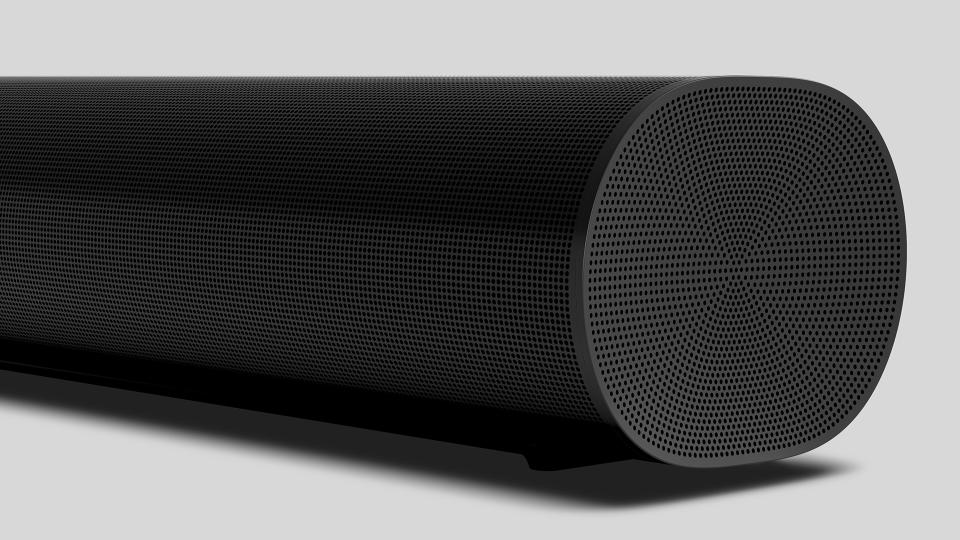
With Dolby seemingly licensing the Atmos badge to anyone willing to pay the fee, it’s little guarantee of quality, as anyone who’s listened to the tiny speakers of an Atmos-badged phone or even most Atmos-badged TVs will attest.
Even the majority of soundbars with upward-firing speakers struggle to deliver a convincing Atmos experience. Often, the mistake is thinking that Dolby Atmos is simply about adding height to a soundtrack, when it should be about filling the room with sound and precisely placing effects in a three-dimensional soundstage.
Thankfully, Sonos has taken the addition of Atmos to its line-up seriously. “It’s so much more than just pointing a couple of speakers upwards,” says Sonos’s product manager Scott Fink. “For Arc, we focused on the playback precision of all the channels, including the height channels.”
According to Fink, Sonos put much work into iterating the curvature of the internal waveguides, revamping Trueplay to account for ceiling distance, angles and acoustics, and tuning Arc with Atmos content producers in music, movies and TV.
All of that effort paid off: the Sonos Arc delivers one of the most convincing Atmos presentations of any soundbar we’ve heard. Height junkies can turn up the volume of the Arc's upward-firing drivers using a separate control, but we don't find it necessary to overly boost the vertical channel to enjoy the Arc's immersive delivery.
Playing the bombing run scene from Unbroken and we’re immediately transported to within the fuselage of the B-24 Liberator. Our listening room is filled with wind noise and the whirr of the plane’s engines, and the incidental creaks and rattles are placed in specific spots, including right in the top corners of the wall we’re sitting against.
Those incidental details are lovely, but the Arc is dynamically deft too, and it’s this combination of qualities that makes the performance so evocative. Each part of the plane sounds different – areas open to the elements are airy and cacophonous, while others are more enclosed and keep outside noise more muffled. As the camera switches between positions, the Arc conveys the subtly unique volume and texture of each.
Bigger dynamic shifts are also handled with aplomb, with the first fly-by of the Japanese fighter plane and the machine-gun fire from the Liberator’s emplacement rocking the room, even at less than a quarter of the Arc’s volume.
We switch to Blade Runner 2049 and this dynamism impresses us further. The scene in which K and Joi fly out of Los Angeles and towards the orphanage transitions from loud – as waves hit the flood barrier -– to eerily quiet, as the rain hits the car, with occasional bits of clearly projected dialogue.
As the storm batters the car, low, distant rumbles of thunder become a more constant barrage from the sky. The bullets fired from below streak across the room, the music builds again, with more menace this time. Suddenly, a spark of lightning plunges everything into near silence as all power is lost and all that is left is the sound of the rain. These sonic contrasts are all handled elegantly, ensuring every dramatic point is delivered.

Reinforcing those loud effects and the Hans Zimmer-composed, Vangelis-like soundtrack is a supremely well judged bass performance. There are vast quantities of deep, weighty and tuneful bass, but the lower frequencies never overwhelm and even at its loudest and deepest, the Arc remains remarkably composed. While its low end isn't the most weighty we've heard, there is no necessity to add a Sub unless you really want that cinematic rumble only large drivers can deliver. The treble is clean and sparkly, without veering into harsh brightness, and so clearly projected is dialogue that, even in the most mumbly of dramas, we never feel the need to enable the Speech Enhancement feature.
That tonal evenness helps make the Arc a much more musical performer than most soundbars. Playing SBTRKT’s Trials Of The Past via Tidal, the treble is crisp but not distracting, the synthesised bass notes have a solid initial thump and smooth fade, and the vocal is clear in the middle, even as the track gets busy. The sibilance isn’t highlighted here as it can be from other sound systems, either.
Switching to Radiohead’s 15 step, there’s effective spatial and rhythmic organisation of the challenging arrangement, with each instrument given space in which to breathe and each making sense even during the track's busiest moments.
Our only complaint about the musical performance is that sound isn’t projected forward and towards the listening position as much as you’d expect, given that movie soundtracks are delivered with such three-dimensionality.
Sonos uses all of the Arc’s drivers during stereo playback, and it might be that the upward- and side-firing speakers are doing too much. Switching the bias to the front-firing drivers might result in a more direct and engaging delivery, and perhaps this is something that Sonos could address in a future software update.
Verdict
That slight lack of directness to music and modest, though well-controlled, bass are our only criticisms of the Arc. It really is a stunning performer, delivering one of the most immersive Dolby Atmos experiences we’ve heard from a soundbar. Only the Sennheiser Ambeo Soundbar and Sony HT-A7000 and while the former is much more expensive, the latter is edging ever closer to the price of the Sonos.
The Arc is more than a soundbar, too. It’s also an app- or voice-controlled wireless speaker with access to practically every music streaming service, and it can be combined with other Sonos speakers in order to create a more complete surround sound arrangement or a multi-room system.
Rarely does a device arrive that does so much and does it all so well. Even rarer that it remains a class leader almost three years after release. Be in no doubt; the Sonos Arc is a superb bit of kit.
SCORES
Sound 5
Features 4
Build 5
MORE:
5 mistakes everyone makes with Sonos' Dolby Atmos soundbars
32 Sonos tips, tricks and features
22 of the best Dolby Atmos movie scenes that put your soundbar to the test
